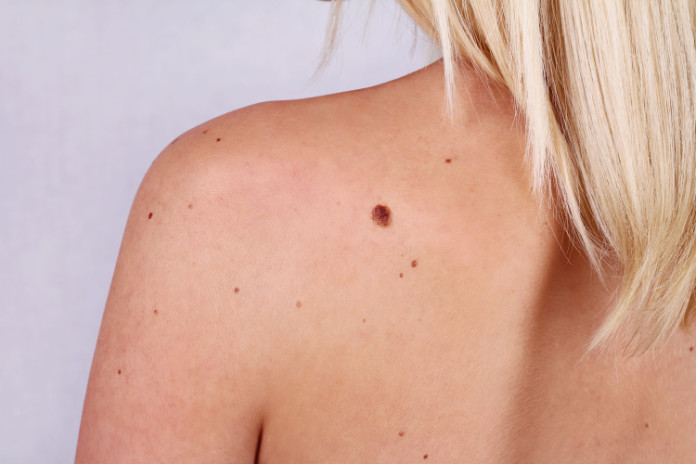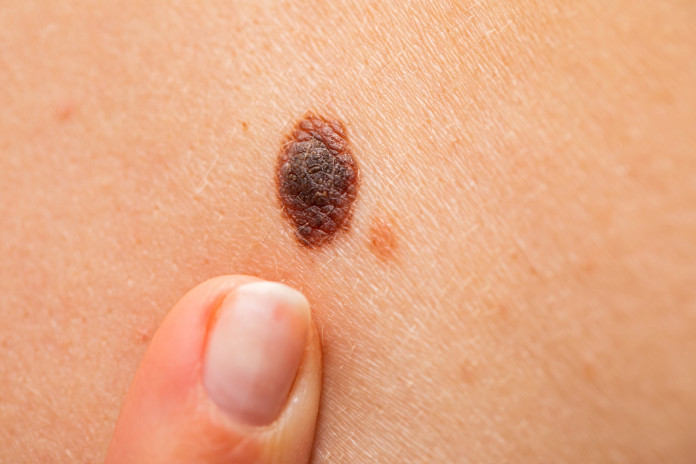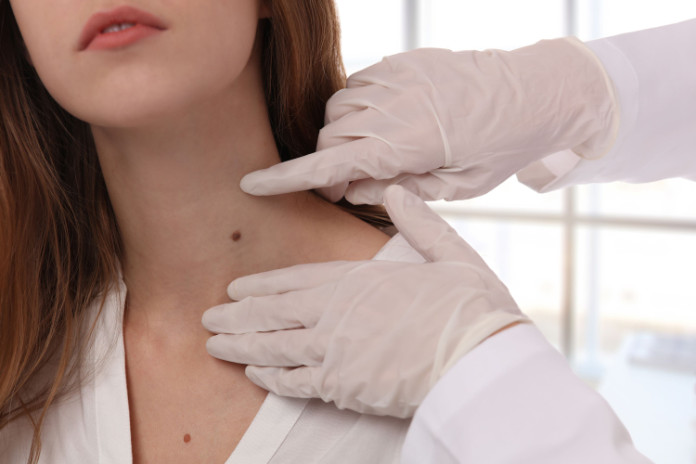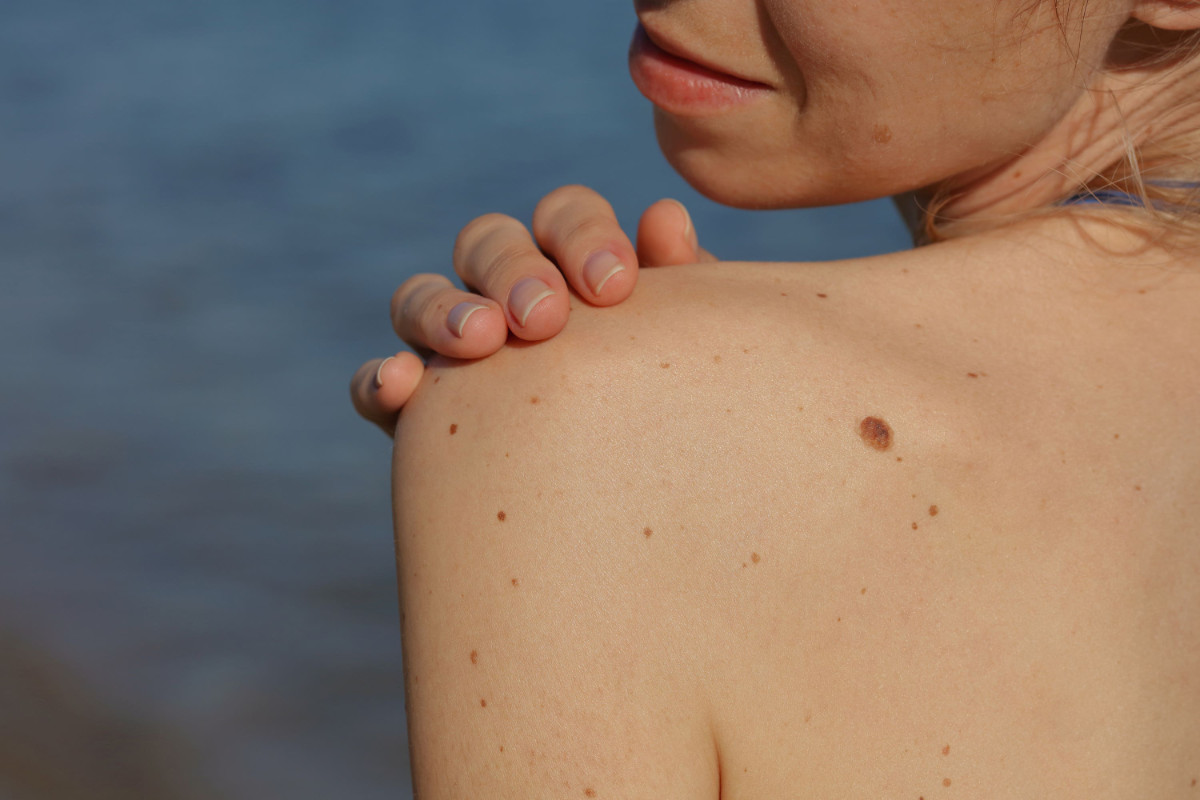Moles. We all know we need to keep an eye on them, but with so much misinformation floating around on the internet, sometimes it can seem hard to know what you’re actually meant to be looking out for.
Firstly, it’s very normal to have moles and freckles and most are completely harmless. But some moles can develop into an aggressive form of skin cancer called malignant melanoma, so it’s important to clock any changes and get them checked as quickly as possible.
Mole check guide
Here, Dr Richard Shaffer, consultant Oncologist at Bupa Cromwell Hospital, to share the key early warning signs of melanoma, and how to tell when a mole needs checking out by a doctor, while Dr Adam Friedmann, a dermatologist at Stratum Clinics answers some common myths about moles.
What exactly is a mole and are they always harmful?

“Moles are small, coloured spots on the skin,” explains Dr Shaffer. “In most cases, they are usually nothing to worry about, but it’s always worth monitoring them in case they change shape, size and colour (or all three), as this could be a sign they are cancerous.”
How can I check my moles at home?

While there is no set way to check your moles, Shaffer says it is always good to monitor any new moles or changes to an existing one. “The better you know your skin and the signs to look out for, the more likely you’ll spot any changes,” he says. “When checking your moles at home, stand in a well-lit room with a full-length mirror. It’s also worth having a hand mirror available to make sure you’re checking your body all over.”
Shaffer says you shouldn’t forget to check the difficult to see places such as your back and scalp too. “If you’re struggling, perhaps ask a partner or parent to have a look at these for you,” he suggests. He stresses to check less obvious places, such as your underarms, the bottom of your feet and in between your fingers.
“Basically, you’re looking for new moles, or changes to the size, colour or shape of an existing mole,” says Shaffer. The A-B-C-D-E method is a simple way of checking your skin tags, he adds.
- A is for asymmetrical. “Do both halves of the mole look different?”
- B is for the border. “Is the edge of the mole uneven or blurred?”
- C is for colour. “Is the mole a mix of different shades or colours?”
- D is for diameter or dark. “Is it bigger than 6mm from side to side?” (As a tip, the end of a pencil is about 5mm across).
- E is for evolving. “Has the mole changed?
If the answer is yes, Shaffer says it may be worth speaking to a doctor to get the mole checked.
Is there anything else I should look for?
Shaffer says most normal skin moles resemble one another, whereas melanomas often stand out from the rest. “You should also look out for itching and bleeding or crusting. If a mole starts to bleed and you haven’t knocked or injured it, you should get it checked as soon as you can,” he adds.
What should I do if I think my mole is cancerous?
If caught early enough, there are treatment methods available, and survival rates are high, says Shaffer. “Knowing the signs and symptoms of skin cancer is imperative, especially if you work outside or spend long periods of time in the sun.”
The bottom line, Shaffer says, is that if you notice any unusual changes to an existing mole or a newly formed one, you should make sure to get it checked by your doctor, who’ll be able to advise if you need further treatment.
Common mole myths
Does having more moles mean more problems?
“This is true to a degree,” says Dr Friedmann. “Anything up to 150-250 is normal – much above this number and the risk of melanoma starts to increase. It’s irregular-looking moles you need to watch out for – and the larger and more irregular looking your moles, the larger the risk of developing melanoma.”
New moles are more likely to become cancerous

Friedmann says cancer can develop in both new and old moles. However, it’s advisable to keep an eye out for new ones that suddenly develop, as well as changes in moles you’ve had for a long time.
“About 50% of malignant melanoma will arrive in existing moles, and half will arrive in new moles,” he says. “The vast majority of moles are benign but some moles have the potential to turn into melanoma. Any mole that’s changing shape or continues to get bigger needs to be reviewed, whether it is new or pre-existing.”
People who have more than 11 moles on their right arm could have a higher risk of skin cancer
Friedmann says: “This is false, but it could be a good indicator of how many moles are on your entire body. Anything in excess of 250 could increase your risk factor.”
The sunshine in the UK is not strong enough to cause skin cancer
This is certainly not true – and it’s a dangerous myth to believe, as wearing sunscreen and protecting your skin during warmer months is vital anywhere in the world, including here at home. “Many people don’t realise that in the UK, UVA is still present and will cause skin damage,” says Friedmann. “So again, this is false.”
The darker your skin is, the more protected you are
“This is right to a degree, as the dark pigment creates a protective barrier between the skin and ultraviolet rays, but you still need to wear protection,” Friedmann stresses. In other words, although people with pale skin may be generally more at risk, people with dark skin can – and do – also get skin cancer.
Friedmann adds that it’s also a myth that paler people can ‘tan themselves to safety’ – the idea that once you’ve built up a tan, you’re less at risk of sun damage. “The bottom line is, if you have pale skin, you cannot ‘tan’ yourself to safety – tanning increases your chance of melanoma,” he says.
Changes should always be checked by a doctor or dermatologist
This one is categorically not a myth – because skin cancer can potentially affect anyone, at any age, and melanoma rates in the UK have been on the rise. While unusual changes don’t always automatically mean you have cancer, getting things checked as soon as you notice them is always advisable. If you do have skin cancer, it’s far easier to treat if picked up early.
Friedmann adds: “Our motto is simple: A change needs a check. Any mole changing in size, shape or colour should be reviewed straight away.”
You may also be interested in…































































